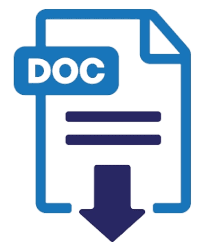ADAPTASI ALAT UKUR STUDENT SUBJECTIVE WELL-BEING QUESTIONNAIRE (SSWQ) VERSI BAHASA INDONESIA
http://orchid.org/0000-0003-3574-0503
Universitas Jenderal Achmad Yani Cimahi
Indonesia
Universitas Jenderal Achmad Yani Cimahi
Indonesia
Universitas Jenderal Achmad Yani Cimahi
Indonesia
Abstract
This study adapts and analyzes the psychometric properties of the Student Subjective Well-being Questionnaire developed by Renshaw in Indonesian with a sample of students. The adaptation of this measuring instrument goes through several stages, starting from translation, back translation, testing the reliability coefficient and collecting validity evidence in the form of content-based testing and internal structure testing using confirmatory factor analysis (CFA). This study involved a sample of 296 high school students in Cimahi City. Testing the reliability of the Indonesian version of SSWQ, the Cronbach alpha result was 0.84. In addition, testing the evidence of internal structure using CFA shows that the Indonesian version of the SSWQ instrument has an acceptable goodness of fit index (RMSEA=0.03, SRMR=0.03, CFI=0.98, and p-value chi squre=0.086). The factor loadings of the items were in the range of 0.54-0.768. It can be concluded that the Indonesian version of the SSWQ measuring instrument has good psychometric properties so that it can be used for research or assessment purposes to measure student well-being in schools that are brief, valid and reliable. This study suggests that the Indonesian version of the SSWQ is developed with a wider variety of samples with a larger sample size.
Keywords
References
Arslan, G., & Renshaw, T. L. (2018). Student Subjective Wellbeing as a Predictor of Adolescent Problem Behaviors: a Comparison of First-Order and Second-Order Factor Effects. Child Indicators Research, 11(2), 507–521. https://doi.org/10.1007/s12187-017-9444-0
Aulia, F., Hastjarjo, T. D., Setiyawati, D., & Patria, B. (2020). Student Well-being : A Systematic Literature Review. Buletin Psikologi, 28(1), 1–14.
Handayani, W.A. & Sari, A.R. (2016). School Well-being dan Penghayatan Stres Pada Siswa SMA Negeri di Kota Cimahi. Jurnal Reliabel, 3(3), 36-48.
Krueger, J. I. (2012). Review : Seligman’s Flourish The Second Coming. The American Journal of Psychology, 125(1), 121–124. http://www.jstor.org/stable/10.5406/amerjpsyc.125.1.0121.
Pemerintah Kota Cimahi. (2016). Peraturan Daerah (Perda) Kota Cimahi Nomor 7 Tahun 2016 tentang Kota Layak Anak [PDF]. Tersedia pada https://jdih.cimahikota.go.id/files/file/upload/uu-1576118653.pdf. (Diakses : 6 Maret 2022)
Pemerintah Republik Indonesia. (2003). Undang-Undang Republik Indonesia Nomor 20 tentang Sistem Pendidikan Nasional [PDF]. Tersedia pada https://jdih.kemdikbud.go.id/arsip/UU_tahun2003_nomor020.pdf. (Diakses : 6 Maret 2022)
Prasetyawati, W., Rifameutia, T., Gilles, RM., & Newcombe, P. (2021). The Adaptation of a Brief Adolescent Subjective Well-Being in School Scale (BASWBSS), the Student Subjective Well-Being Scale in the Indonesian Context. ANIMA Indonesian Psychological Journal, 2(36), 184–203.
Pusat Penelitian Kebijakan, Kementrian Pendidikan, Kebudayaan, Riset dan Teknologi. (2021). Risalah Kebijakan : Mendorong Peningkatan Kesejahteraan Psikologis Siswa Selama Pandemi Covid-19. Nomor 5. https://pskp.kemdikbud.go.id.
Renshaw, T. (2022, Juli 30). Student Subjective Well-being Questionnaire. Diambil dari Tyler Renshaw.PhD : https://www.tyrenshaw.org/sswq.
Renshaw, T. L., & Arslan, G. (2016). Psychometric Properties of the Student Subjective Wellbeing Questionnaire With Turkish Adolescents: A Generalizability Study. Canadian Journal of School Psychology, 31(2), 139–151. https://doi.org/10.1177/0829573516634644
Renshaw, T. L., Long, A. C. J., & Cook, C. R. (2015). Assessing adolescents’ positive psychological functioning at school: Development and validation of the student subjective wellbeing questionnaire. School Psychology Quarterly, 30(4), 534–552. https://doi.org/10.1037/spq0000088
Seligman, M. (2018). PERMA and the building blocks of well-being. Journal of Positive Psychology, 13(4), 333–335. https://doi.org/10.1080/17439760.2018.1437466
Singh, S., Roy, D., Sinha, K., Parveen, S., Sharma, G., & Joshi, G. (2020). Impact of COVID-19 and lockdown on mental health of children and adolescents: A narrative review with recommendations. Psychiatry Research, 293(August), 113429. https://doi.org/10.1016/j.psychres.2020.113429.
Suldo, S. M., & Shaffer, E. J. (2008). Looking beyond psychopathology: The dual-factor model of mental health in youth. School Psychology Review, 37(1), 52–68. https://doi.org/10.1080/02796015.2008.12087908
Tian, L., Du, M., & Huebner, E. S. (2015). The Effect of Gratitude on Elementary School Students’ Subjective Well-Being in Schools: The Mediating Role of Prosocial Behavior. Social Indicators Research, 122(3), 887–904. https://doi.org/cc
Tian, L., Wang, D., & Huebner, E. S. (2015). Development and Validation of the Brief Adolescents’ Subjective Well-Being in School Scale (BASWBSS). Social Indicators Research, 120(2), 615–634. https://doi.org/10.1007/s11205-014-0603-0

